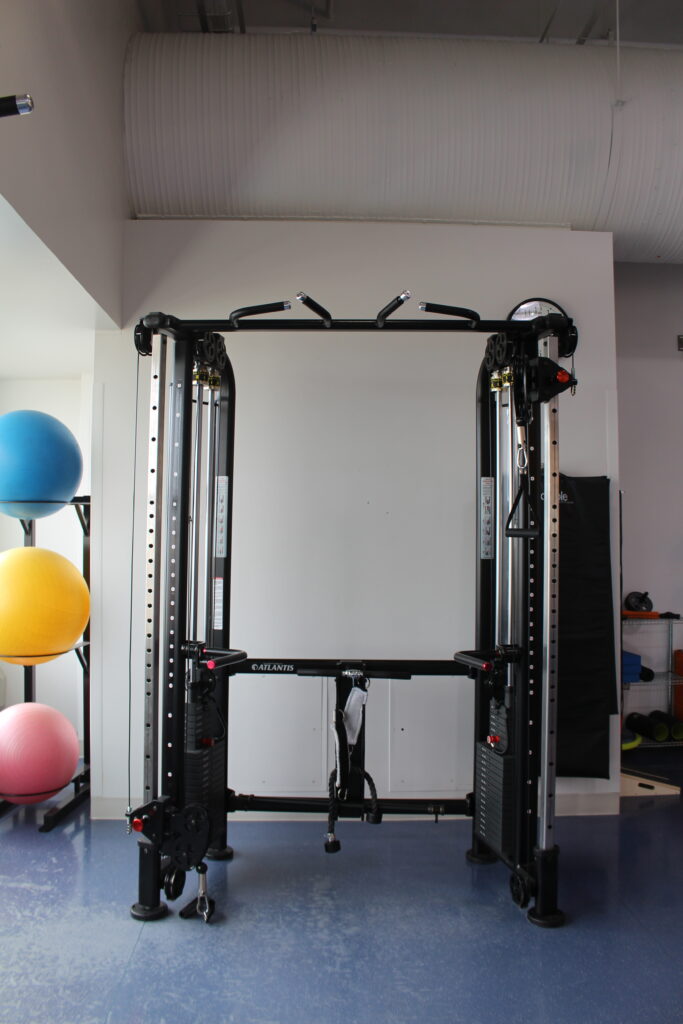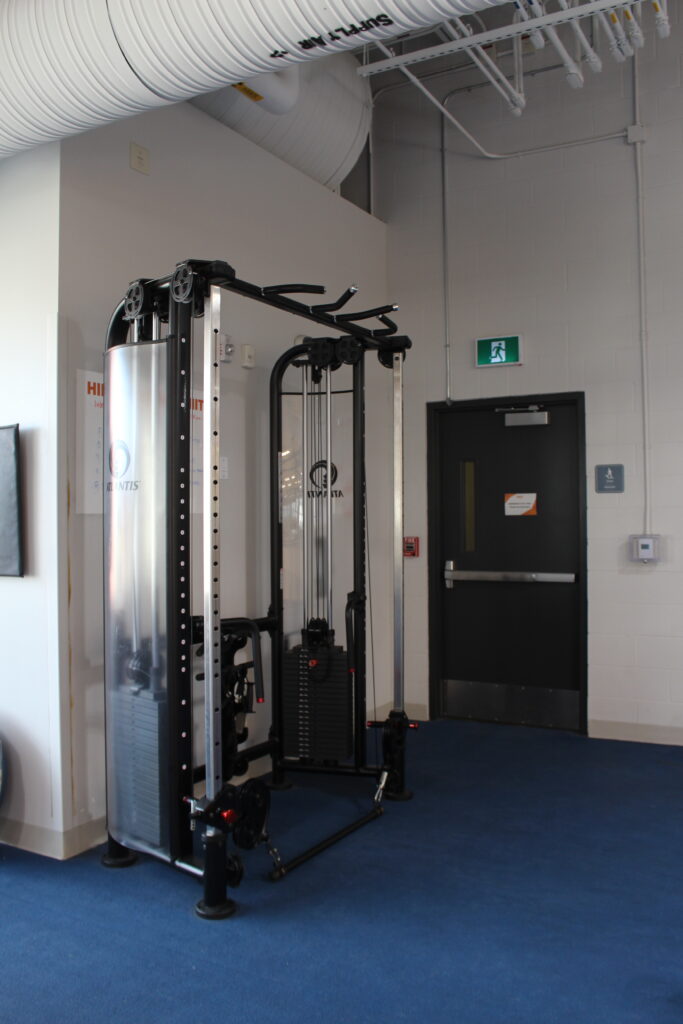By Sam Cortes, Communications Coordinator
The functional trainer or “cable machine” is a piece of equipment you can use for a variety of exercises to help you meet your fitness goals.
The great thing is it allows you to train at a greater range of motion, but requires less technical demands to learn a movement.
For example, the classic barbell hang cleans.
To do the barbell hang cleans, you must learn the pull and catch, including the transition. Doing the exercise like in the video above may be difficult if you have limited shoulder and wrist mobility, especially in the catch position.
Now, you can do this same exercise using the dynamic cable machine.
Here, we hinge at the hips to begin the movement, and the pull and catch is at your shoulders vs on your shoulders in the traditional barbell.
If you’re a beginner, or you’re short on time but need to produce a similar power response, working out with the cable machine takes away the complexity of the movement while safely simplifying it!
Two Types of Cable Machines
In our fitness centre, we have two types of cable machines. The difference between them is the ratio of the weights, creating greater resistance and difficulty on the lower ratio machine.
The difficulty is higher on the lower ration (2:1) compared to the higher ration (4:1). For example, a 2:1 is closer to the feel of a 20 lb weight compared to a 4:1 where it would feel even less.
Standard 2:1 pulley ratio – This one allows for a higher resistance feel compared to the 4:1. Your movement is more limited.

Dynamic 4:1 pulley ratio – This one supports a large distance in dynamic movement and allows for a more explosive workout.

Cable Machine Variations (AKA Changing the Fulcrums)
One cool thing about the pulley system is that we can change the fulcrum of the exercise and place a new stimulus to any given movement.
We can think of it as opening a door. It would be easier to open the door if the handle is further away from the hinges compared to placing the handle close to the hinges. Changing the fulcrum changes the “moment arm” of that movement.
For example, a low bicep curl, to a mid-level bicep curl, to a high bicep curl.
This exercise may be easier at one setting, but harder at another. Changing up a movement like this can also be a great tool for injury prevention by training at different joint-specific angles.
You can also do lots of work with your core.
Performing these movements on the dynamic cable machine stabilizes the lower body and core muscles, making for an excellent workout.
The cable machines may look complicated, but it is much easier than you think and it’s an effective way to workout once you learn the ins and outs! If you have any questions, don’t hesitate to ask us next time you’re at the gym or contact us at fitness@sportmanitoba.ca.
Source:
Signorile JF, Rendos NK, Heredia Vargas HH, Alipio TC, Regis RC, Eltoukhy MM, Nargund RS, Romero MA. Differences in Muscle Activation and Kinematics Between Cable-Based and Selectorized Weight Training. J Strength Cond Res. 2017 Feb;31(2):313-322. doi: 10.1519/JSC.0000000000001493. PMID: 28129277.






